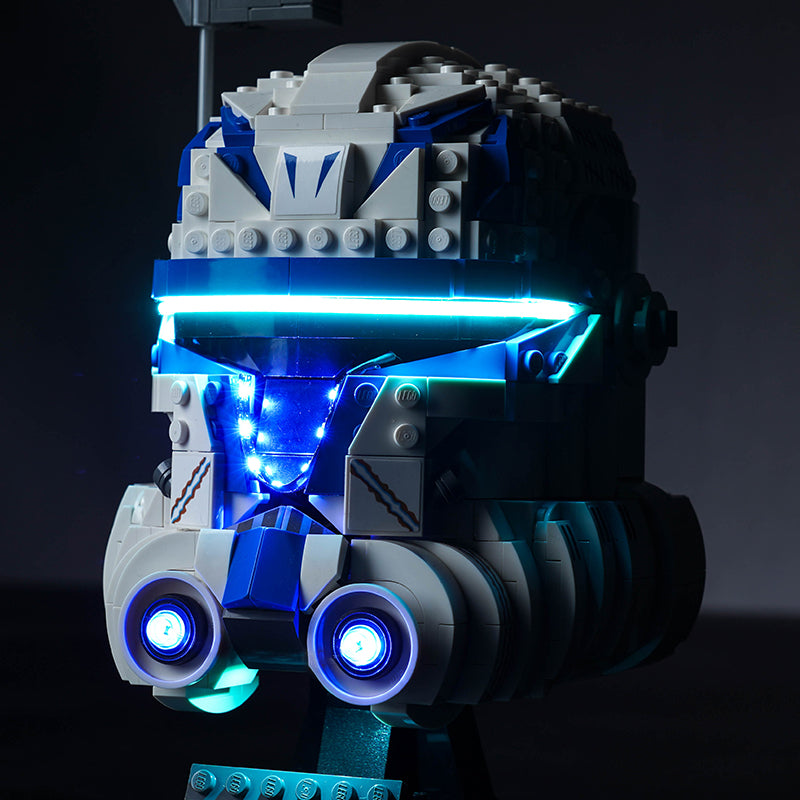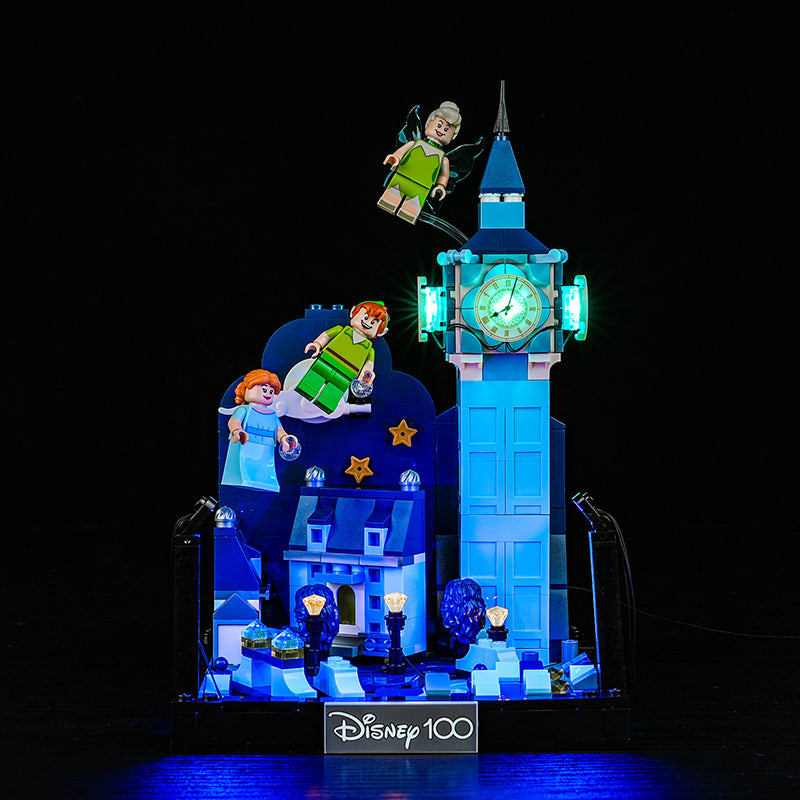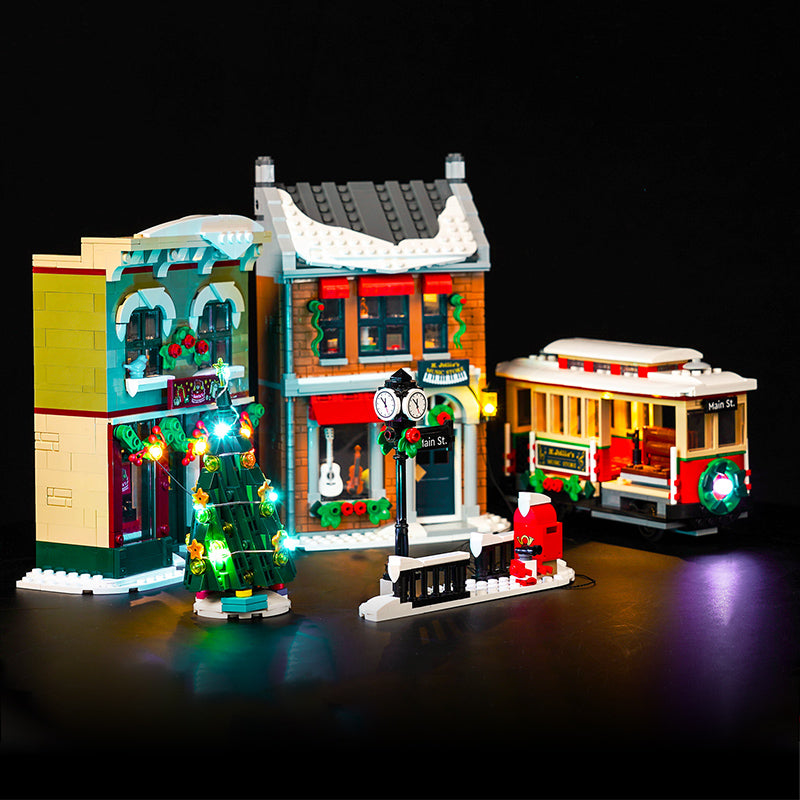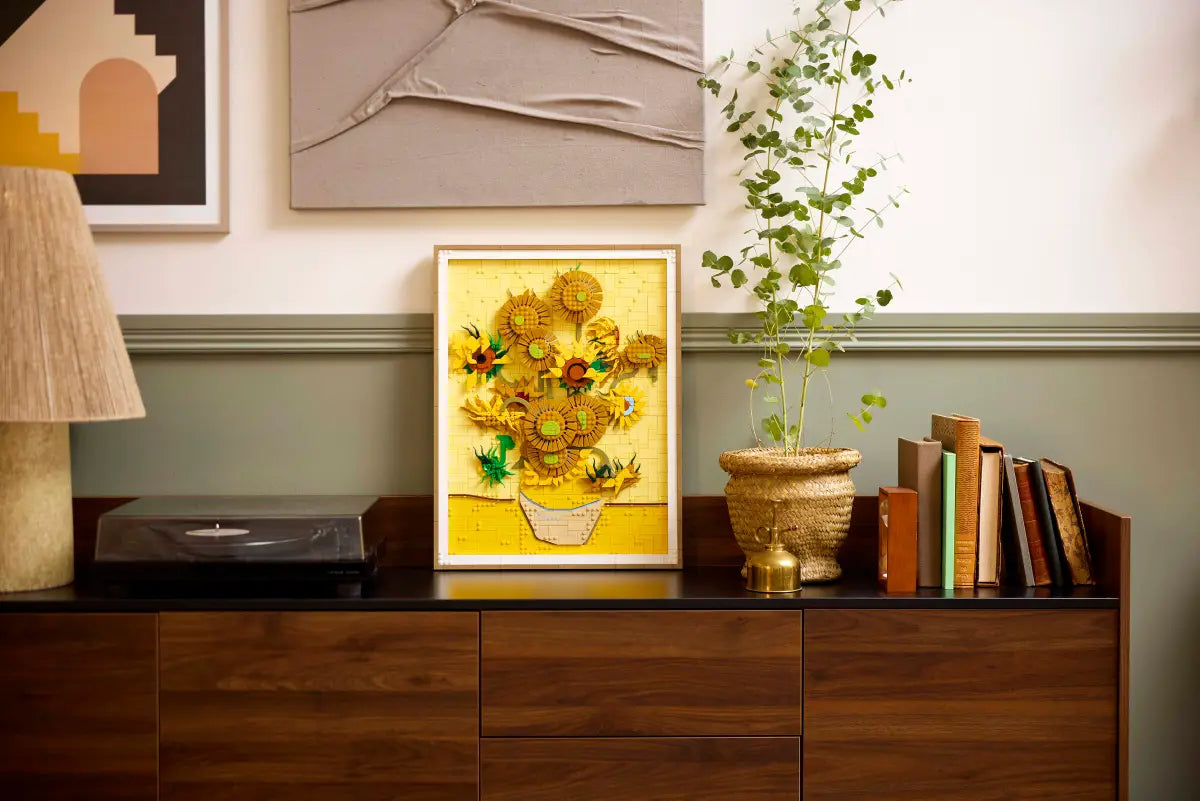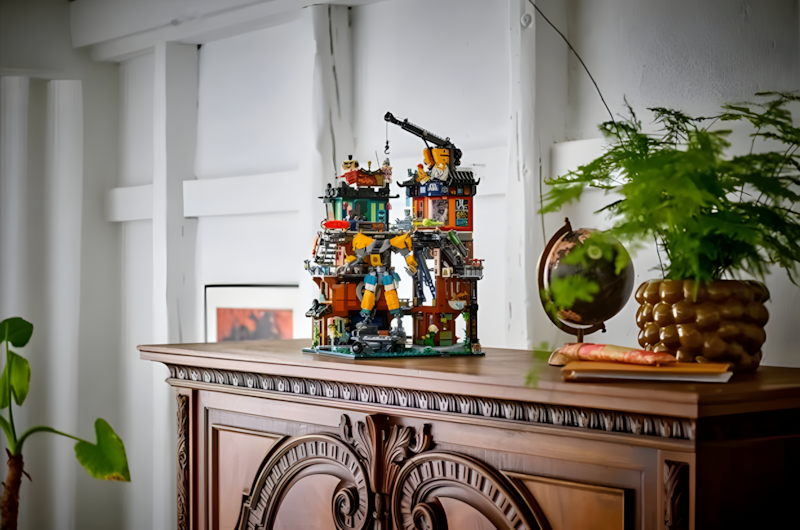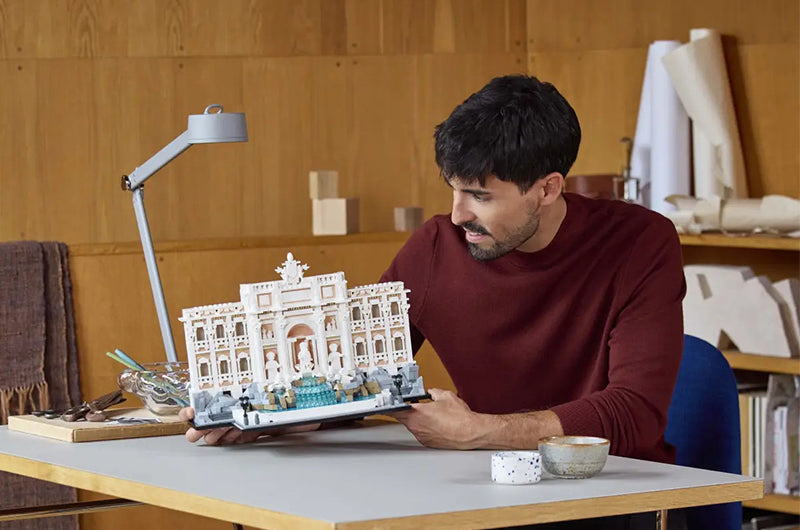The LEGO Art series has captured the attention of LEGO enthusiasts worldwide with its unique artistic reinterpretations. The latest “Sunflowers” set adds a new highlight to the series. As one of Van Gogh’s most iconic works, the “Sunflowers” set in LEGO form successfully blends classic art with modern creativity.

This set is priced at $199.99 USD or EUR and will be officially released on March 1, 2025. It is part of the LEGO 18+ theme series, designed for adult LEGO fans with a strong interest in art and architecture.
The set cleverly uses the versatility of LEGO bricks to intricately recreate the depth and dimensionality of the sunflowers, while the background color scheme and composition emphasize Van Gogh’s artistic style.
Once completed, the “Sunflowers” set can serve as a beautiful home decoration or art collection piece, marking a new breakthrough for LEGO in the presentation of art and creativity, paving the way for future LEGO reinterpretations of classic artworks.
Set Overview
Historical Background
Building Experience
Comparison with the Original
Displaying LEGO Sunflowers
Beyond Architectural Art
Comparison with Other LEGO Art Sets
Pros and Cons
Conclusion
Set Overview
The box design centers on the artwork itself, with the front of the box featuring a large diagonal image of the final model, along with the “Sunflowers” logo from the Van Gogh Museum.

On the back of the box, there’s a lifestyle photo displaying the LEGO Sunflowers, along with an image of the original Van Gogh painting (the fourth variation of the sunflower vase, replicated by the Van Gogh Museum), offering a detailed comparison between the LEGO design and the original painting.

The packaging also introduces a new visual identity for LEGO Art. Previously, the box featured a gray dot-filled Word Art style, while now the word art is in lowercase, with a frame added next to the text.
A keen observer might even notice subtle brushstroke-like prints— a subtle tribute to Van Gogh’s iconic style. Inside the box are about 2,615 pieces, ensuring an engaging building experience. This piece count means it will be a project that requires several hours, making it ideal for a weekend-focused activity or a relaxing build.
Historical Background
The “Sunflowers” series consists of seven paintings created by Van Gogh during his time in Arles. The LEGO tribute to Van Gogh is based on “Fifteen Sunflowers in a Vase,” a piece Van Gogh gifted to fellow artist Paul Gauguin, currently housed at the Van Gogh Museum in Amsterdam.

Many artists have painted flowers, and Van Gogh was no exception. A passionate artist, he once mentioned in a letter to his brother, “Sunflowers are my flowers.”
Van Gogh’s sunflowers seem like pulsating flames, with vivid colors and intense yellow hues that could almost be called “a symphony of yellow.” If counted closely, there are 38 different shades of yellow in the “Fifteen Sunflowers in a Vase” painting.

Van Gogh favored using the pointillist technique, a method where he eliminated contour lines and broke each shape into colored dots, conveying the emotion behind light and color.
During his lifetime, Van Gogh wasn’t understood by the public, and he once said, “It’s hard to die, but harder to live.” Despite facing poverty and loneliness, Van Gogh pushed himself to seek light in adversity, and his “Sunflowers” series reflected his understanding of life.
Building Experience
Frame Construction
We began by building the frame, using many brown elements to form a solid base structure. This frame’s total thickness is two bricks, ensuring it is sturdy enough to support the upcoming details. To strengthen the frame, we used double-layered 1×2 technique bricks at various positions to provide additional support.

The lower layer of the frame is made up of a single board, the foundation of the structure, on top of which we built two layers of bricks for further reinforcement. Next, we placed two more boards on top to enhance the frame’s stability, giving it a solid foundation for the decorative elements.
The edges of the frame were surrounded by a ring of brown boards, giving the whole structure a neat appearance while preventing elements from slipping out of place. These meticulously placed brown tiles made the entire frame appear refined and structurally sound.
By this stage, we had completed part of Bag 6. As the basic frame elements gradually took shape, the following steps would further refine the details and add depth.
The canvas
The canvas’s base support is made of reddish-brown bricks and plates, which ensure a stable structure. A large 16×16 board is covered on top, and secured at the joints with 4×4 round boards on the back. This part was a little difficult to handle at times when I was building it, and I recommend building on a stable and solid surface to avoid unnecessary trouble.

Once the canvas was laid, the next step was to add a background to it: mainly cool yellow tiles, with some plates. Other colored plates were used to mark areas where flowers would be placed, or where other elements would be placed in the future.
LEGO Art kits have evolved a lot in design, from using small dots and rivets everywhere possible to now using larger tiles and plates to fill spaces more quickly. These larger elements make it easier to spot mistakes in the design early on. The seams between the canvas boards were covered with a few 2×2 cool yellow tiles, and a few clips were used between the plates and tiles, and I guess their specific purpose will gradually become apparent later in the construction process.
When we worked on the lower part of the image, we chose a yellow background and carefully traced the shape of the vase, ready for the insertion of the sunflowers.
Layering
Next, we start with the vase, and we paint in layers. By painting in layers, you can clearly see the textures in the painting. It is worth noting that there is only one printed element on the vase: Vincent's signature.

From here, we start painting the sunflowers. With green as the base, we use three yellows: cool yellow, bright yellow, and pearl gold.
Layers and Flowers
With the canvas ready, we began to paint the flowers: sunflowers in different states of life, from blooming to withering and setting seeds. It’s notable that Van Gogh tended to use darker tones to represent healthy flowers, while lighter colors were used for the withered flowers. In fact, he originally planned to paint this painting using only three yellows, and almost no other colors (although green is still quite eye-catching). For the LEGO build, we chose cool yellow (a bright pale yellow), bright yellow, and pearl gold as the main tones. Pearl gold was used specifically to represent healthy flowers, and its texture gave the petals a more layered look and added more texture to the entire build.
The withered and aging sunflowers are a wonderful example of the translation of the impasto technique from oil painting to LEGO bricks. I especially appreciate the olive green and dark green animal horn elements, which vividly represent the withered and damaged flowers. There are also some bright green horns, which may symbolize the flowers that still retain their vitality.

The way these aging plants are built is particularly interesting, with clear layers, mainly composed of green, bright yellow and occasional flat gold elements. The lush flowers are quite different. They are flat gold with a gold or nougat center (although the name makes me think of chocolate boxes, but I shouldn’t digress). The flowers are built around the core of the steering wheel, with groups of elements connected by clips to form petals. The combination of gold and brown puzzled me at first, but the color combination is not abrupt compared to the original artwork. The petal shapes vary, so their construction process is not as repetitive as I initially feared.
The whole structure gradually has a rich sense of depth through the combination of gold or tan 1×2 plates and clips, plus the occasional use of some plates to add thickness, or 1×1 plates with clips and skates. Lime green and dark brown elements are also appropriately incorporated, faithful to the source material (a copy of this work is in the Van Gogh Museum in Amsterdam), making the whole construction process more authentic and artistic.
Assembly
When we have finished the construction, we need to assemble to the previous frame and wrap it around the canvas. The frame falls easily around the canvas and is then fixed with a Technic axle with a stopper at the end. The axle passes through the ordinary Technic brick hole on the frame and is fixed in a brick with a cross hole for the axle. The axle sticks out over the edge of the canvas so it can be easily removed.

I have to admit that the result after assembly is quite striking!
Compared with the original
1. In order to restore Van Gogh's original work as faithfully as possible, the LEGO design team worked closely with the Van Gogh Museum to ensure that every detail conforms to the true restoration of history and art. From the number of petals to the shape of the flower, and even the 16th sunflower hidden in the painting, LEGO has made careful considerations and reproductions. It is particularly worth mentioning that the LEGO team's focus on the details in the original painting ensures the high precision and artistic value of this work.

2. The three main yellow tones in the painting are specially reproduced, and every detail of the sunflower is carefully presented. Especially under the thick coating technique in the style of Van Gogh, the LEGO design team used a layered stacking method to reproduce the heavy brush effect of the original.
3. Unlike any previous works in the LEGO Art series, it successfully combines 2D and 3D elements. This not only increases the complexity of the assembly, but also makes the construction process of each petal and flower full of challenges. Especially in the process of assembling sunflowers, the design team used a variety of different construction techniques, using the different shapes and overlapping methods of LEGO bricks to present these flowers in the most natural way.
Displaying LEGO Sunflowers
The pinnacle of the LEGO Sunflower journey is not just about the build itself, but also about finding the perfect place to display your artistic achievement. Thankfully, the frame itself is sturdy and the hanging elements hold up well when the model is hung on the wall. You can enjoy this excellent masterpiece at home.

But what really takes this piece to the next level is its fidelity to the original painting. The LEGO designers have done more than simply capture the overall image.
You can take your display a step further by placing the finished Sunflower piece next to the Starry Night. It is possible to create a sharp contrast and complementary effect in the visual. The Sunflower piece is full of lively and passionate tones, while the Starry Night gives a sense of tranquility with its deep blues and swirling lines. This combination not only attracts the eye, but also brings a sense of artistic balance and harmony.

Beyond the art of building
LEGO Sunflower 31215 goes beyond the scope of typical building blocks. It is an artistic journey that transforms a masterpiece of creation into a fascinating 3D LEGO model.
You can witness Van Gogh's iconic brushstrokes, combined with innovative construction techniques, to bring this sunflower painting to life, bringing artistic expression to the extreme.
Unlike LEGO sets that focus on functionality and fun, LEGO Sunflowers focuses more on artistic reproduction, making it the best choice for adult architects who pursue innovative challenges.
Compared with other LEGO Art
The LEGO Art series provides art lovers with a variety of creative methods that go far beyond simple LEGO building. In this series, you can not only immerse yourself in the unique charm of building LEGO "Sunflower" works, but also explore more amazing works of art.
For example, the LEGO Eiffel Tower kit allows you to recreate this Parisian landmark that symbolizes romance and history. The combination of each building block seems to tell the unique story of the tower, allowing you to feel the beauty of the building during the construction process. The LEGO Art series opens up endless possibilities for artistic creation, making every construction full of fun and a sense of accomplishment.

Advantages and Disadvantages

Advantages:
1. Unique artistic design: Very beautiful and symbolic flowers
2. Interesting building process: Exercise spatial sense and detail processing ability.
3. Practicality as home decoration: Add a natural atmosphere to the living space.
4. Compatible with LEGO Art series: Display with other series to enhance the overall artistic effect.
Disadvantages:
1. The building process is relatively monotonous: For some LEGO fans who like complex structures, the building process may seem a bit monotonous.
2. The color is relatively monotonous: If you like designs with more color changes, this may not be the most suitable choice.
3. It takes a long time: For novices, there are more than two thousand parts, which may be a challenge.
4. The price is a bit high: There are more parts and attention to artistic details, so the price may be higher.
Conclusion
Vincent Van Gogh's "Sunflowers" LEGO Art Set is not just a building toy, it is a perfect combination of art and creativity, and it is LEGO's affectionate tribute to the art classics.
Through clever construction techniques and careful attention to detail, LEGO has successfully brought Van Gogh's work into a whole new dimension. The combination of each LEGO brick is not only a technical challenge, but also a collision of inspiration for artistic creation. During the construction process, you are not only interacting with the bricks, but also communicating with art and history.

Although some people may find it expensive, its hidden artistic value and ornamental value are still worth buying and still have great appeal.
For any art and LEGO fan, this set is undoubtedly an excellent collection and a unique art experience. Not only does it allow LEGO enthusiasts to enjoy the fun of building, but it also allows art lovers to re-experience the charm of handed-down works through building.
Sunflower Light Kit
If you want to add more colors and vivid light effects to your LEGO bricks, our BrickBling Light Kit is your ideal choice!
These carefully designed light kits can not only make your LEGO works more colorful during the day, but also emit charming brilliance at night, giving your models a new life.
Now add a touch of dazzling light to your LEGO bricks and make your collection really light up! ✨

